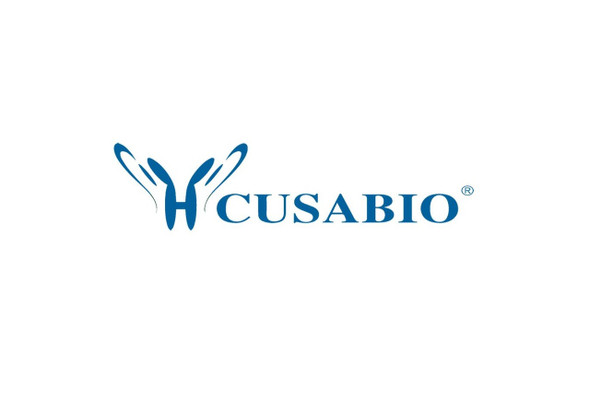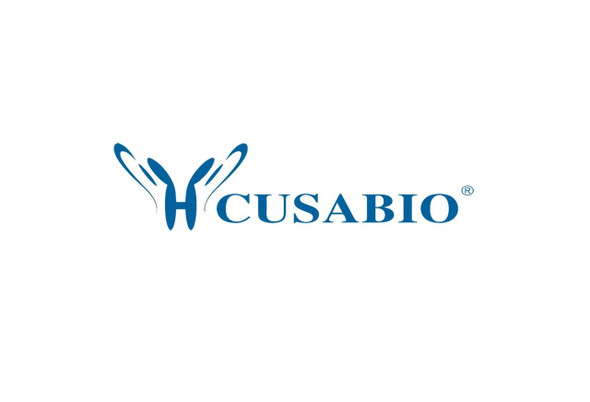Cusabio Human Recombinants
Recombinant Human Kit ligand (KITLG), partial | CSB-EP012376HU
- SKU:
- CSB-EP012376HU
- Availability:
- 13 - 23 Working Days
Description
Recombinant Human Kit ligand (KITLG), partial | CSB-EP012376HU | Cusabio
Alternative Name(s): Mast cell growth factor ;MGFStem cell factor ;SCFc-Kit ligand
Gene Names: KITLG
Research Areas: Developmental Biology
Organism: Homo sapiens (Human)
AA Sequence: EGICRNRVTNNVKDVTKLVANLPKDYMITLKYVPGMDVLPSHCWISEMVVQLSDSLTDLLDKFSNISEGLSNYSIIDKLVNIVDDLVECVKENSSKDLKKSFKSPEPRLFTPEEFFRIFNRSIDAFKDFVVASETSDCVVSSTLSPEKDSRVSVTKPFMLPPVA
Source: E.coli
Tag Info: N-terminal GST-tagged
Expression Region: 26-189aa
Sequence Info: Partial
MW: 45.5 kDa
Purity: Greater than 90% as determined by SDS-PAGE.
Relevance: Ligand for the receptor-type protein-tyrosine kinase KIT. Plays an essential role in the regulation of cell survival and proliferation, hatopoiesis, st cell maintenance, gametogenesis, mast cell development, migration and function, and in melanogenesis. KITLG/SCF binding can activate several signaling pathways. Promotes phosphorylation of PIK3R1, the regulatory subunit of phosphatidylinositol 3-kinase, and subsequent activation of the kinase AKT1. KITLG/SCF and KIT also transmit signals via GRB2 and activation of RAS, RAF1 and the MAP kinases MAPK1/ERK2 and/or MAPK3/ERK1. KITLG/SCF and KIT promote activation of STAT family mbers STAT1, STAT3 and STAT5. KITLG/SCF and KIT promote activation of PLCG1, leading to the production of the cellular signaling molecules diacylglycerol and inositol 1,4,5-trisphosphate. KITLG/SCF acts synergistically with other cytokines, probably interleukins.
Reference: The full-ORF clone resource of the German cDNA consortium.Bechtel S., Rosenfelder H., Duda A., Schmidt C.P., Ernst U., Wellenreuther R., Mehrle A., Schuster C., Bahr A., Bloecker H., Heubner D., Hoerlein A., Michel G., Wedler H., Koehrer K., Ottenwaelder B., Poustka A., Wiemann S., Schupp I.BMC Genomics 8:399-399(2007)
Storage: The shelf life is related to many factors, storage state, buffer ingredients, storage temperature and the stability of the protein itself. Generally, the shelf life of liquid form is 6 months at -20?/-80?. The shelf life of lyophilized form is 12 months at -20?/-80?.
Notes: Repeated freezing and thawing is not recommended. Store working aliquots at 4? for up to one week.
Function: Ligand for the receptor-type protein-tyrosine kinase KIT. Plays an essential role in the regulation of cell survival and proliferation, hematopoiesis, stem cell maintenance, gametogenesis, mast cell development, migration and function, and in melanogenesis. KITLG/SCF binding can activate several signaling pathways. Promotes phosphorylation of PIK3R1, the regulatory subunit of phosphatidylinositol 3-kinase, and subsequent activation of the kinase AKT1. KITLG/SCF and KIT also transmit signals via GRB2 and activation of RAS, RAF1 and the MAP kinases MAPK1/ERK2 and/or MAPK3/ERK1. KITLG/SCF and KIT promote activation of STAT family members STAT1, STAT3 and STAT5. KITLG/SCF and KIT promote activation of PLCG1, leading to the production of the cellular signaling molecules diacylglycerol and inositol 1,4,5-trisphosphate. KITLG/SCF acts synergistically with other cytokines, probably interleukins.
Involvement in disease: Hyperpigmentation with or without hypopigmentation, familial progressive (FPHH); Deafness, congenital, unilateral or asymmetric (DCUA)
Subcellular Location: Isoform 1: Cell membrane, Single-pass type I membrane protein, SUBCELLULAR LOCATION: Isoform 2: Cytoplasm, Cytoplasm, cytoskeleton, Cell membrane, Single-pass type I membrane protein, Cell projection, lamellipodium, Cell projection, filopodium, SUBCELLULAR LOCATION: Soluble KIT ligand: Secreted
Protein Families: SCF family
Tissue Specificity:
Paythway: MAPKsignalingpathway
Form: Liquid or Lyophilized powder
Buffer: If the delivery form is liquid, the default storage buffer is Tris/PBS-based buffer, 5%-50% glycerol. If the delivery form is lyophilized powder, the buffer before lyophilization is Tris/PBS-based buffer, 6% Trehalose, pH 8.0.
Reconstitution: We recommend that this vial be briefly centrifuged prior to opening to bring the contents to the bottom. Please reconstitute protein in deionized sterile water to a concentration of 0.1-1.0 mg/mL.We recommend to add 5-50% of glycerol (final concentration) and aliquot for long-term storage at -20?/-80?. Our default final concentration of glycerol is 50%. Customers could use it as reference.
Uniprot ID: P21583
HGNC Database Link: HGNC
UniGene Database Link: UniGene
KEGG Database Link: KEGG
STRING Database Link: STRING
OMIM Database Link: OMIM









